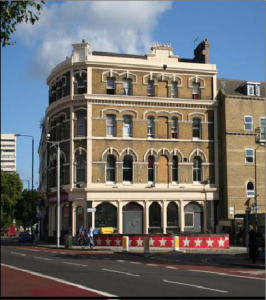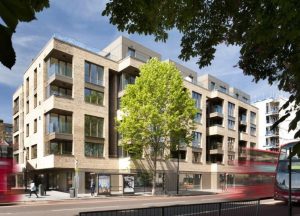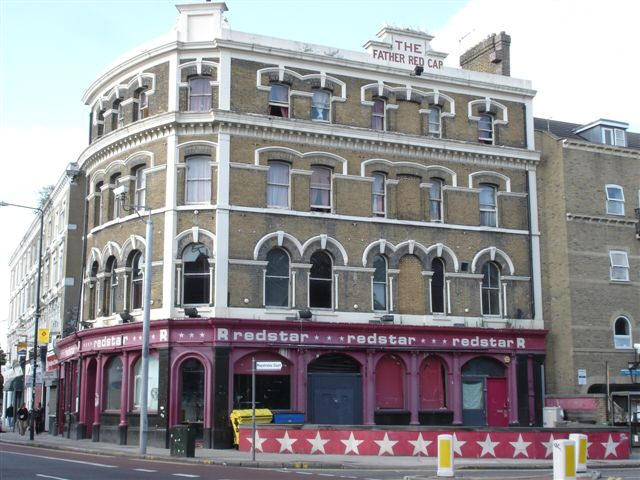

Conservation advice was provided in respect of a revised proposal for the redevelopment of 1-6 Camberwell Green/ 307-311 Camberwell New Road.
Townscape Impact and Design Sensitivity
As the proposed redevelopment site is located within the Camberwell Green Conservation Area, a key focus of the design was its sensitivity to the surrounding historic townscape. The proposal, which includes a high-density mix of residential and commercial spaces, aims to preserve the visual character of Camberwell while introducing modern architecture. The design draws inspiration from the angularity of Camberwell Green and the evolving scale of nearby structures, ensuring that the new development fits seamlessly into the existing urban fabric.
Historical Context of Camberwell
Historically, Camberwell was a rural village that evolved into an urban area following the opening of a train station in 1862. The area transformed from a farming community to a bustling inner suburb, attracting businesses like the London and County Bank, established in 1899. While much of the original Georgian and Victorian architecture was lost during WWII, Camberwell retains important architectural and cultural landmarks that shape its identity.
Opportunities for Enhancing the Conservation Area
The redevelopment offers several opportunities for enhancing the local conservation area, including:
• Reinstating the building line along Camberwell Green and New Road to enhance the street frontage.
• Revitalising historic architectural elements, inspired by the vibrant heritage around Camberwell Green.
• Reusing disused buildings to reintegrate the area’s heritage into contemporary design.
Nearby landmarks such as the Redstar Pub, Peabody Estate, and the Greek Orthodox Church were considered significant influences on the design.
Heritage Impact Assessment
The masterplan aims to regenerate the site while respecting the historic value of nearby buildings. Our work involved evaluating the contribution of listed structures to the townscape, reviewing design proposals, and conducting visual impact assessments to ensure that the new development enhances the area without overwhelming it.
Design Recommendations and Massing
To preserve the area’s historic rhythm, we recommend incorporating traditional shopfronts at ground level, reflecting the proportions of historic shops. The design takes inspiration from local materials like yellow London stock brick and Portland stone. The six-storey building massing was carefully designed to complement the existing townscape, respecting established building lines and gradually increasing in height as it moves away from the public realm.
The heritage appraisal concluded that the new building, while taller than its neighbors, would enhance the townscape by blending with the existing architectural fabric. The design respects the area’s Victorian, townhouse, and open-space character, making this redevelopment a valuable addition to the Camberwell Green Conservation Area.

